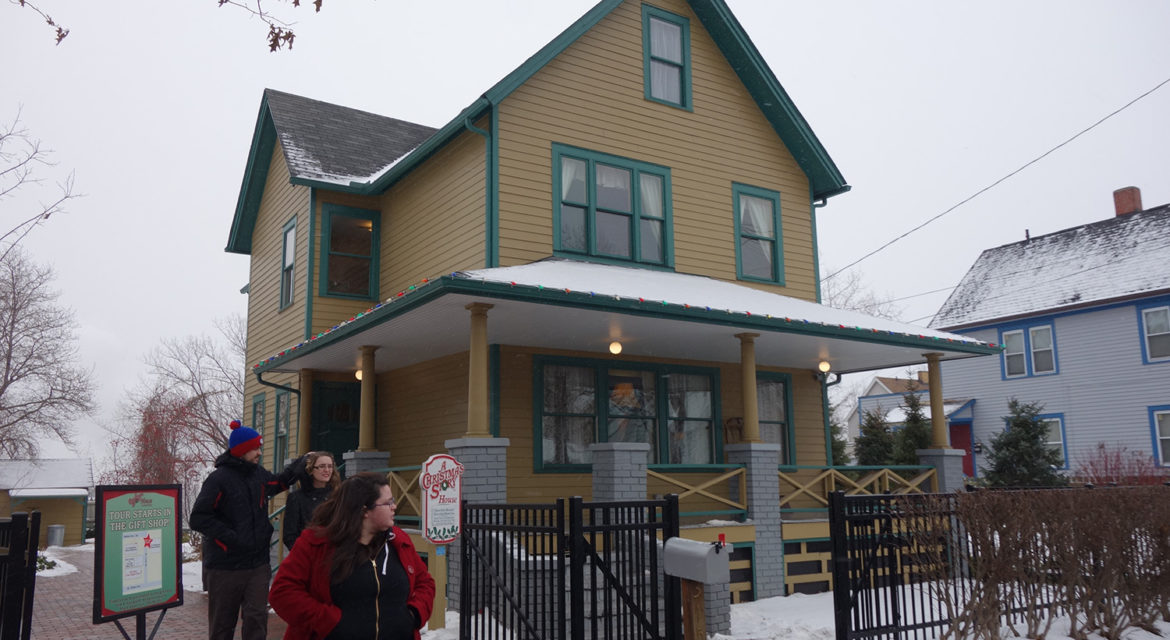 The movie “A Christmas Story” was released a week before Thanksgiving 1983 to a mixed reception from audiences and critics. Over the years though, television airings and the home video release of the film turned it into a seasonal classic for audiences across the world. A cable network started a 24-hour marathon of the film in 1988, which is now a tradition. The annual marathon starts every Christmas Eve and attracts more than 40 million people over those 24 hours.
The movie “A Christmas Story” was released a week before Thanksgiving 1983 to a mixed reception from audiences and critics. Over the years though, television airings and the home video release of the film turned it into a seasonal classic for audiences across the world. A cable network started a 24-hour marathon of the film in 1988, which is now a tradition. The annual marathon starts every Christmas Eve and attracts more than 40 million people over those 24 hours.
The house from the movie is located just outside of downtown Cleveland, Ohio, where the exteriors from the film were shot. This fact enabled the creation of A Christmas Story House, which celebrates the movie in a totally unique way and attracts audiences from across the city and the entire world.

From Film to eBay to Museum
“A Christmas Story” is based on Jean Shepherd’s book “In God We Trust: All Others Pay Cash”. It’s a collection of semi-autobiographical short stories that Shepherd wrote for a magazine during the 1960s. In the movie, which takes place in the 1940s, a young boy named Ralphie attempts to convince his parents, his teacher, and Santa that a Red Ryder B.B. gun really is the perfect Christmas gift.
While the movie’s interior scenes were shot on a sound stage in Toronto, a house in the Tremont neighborhood of Cleveland was where exterior shots of “A Christmas Story” were filmed. The owner of the home vacated the residence for filming, and after it was over, it went back to being just another house on the near east side of Cleveland. When the house was put up for auction, San Diego entrepreneur Brian Jones bought the house in order to create a monument for fans of the film, which continues to be discovered by audiences of all ages and types.
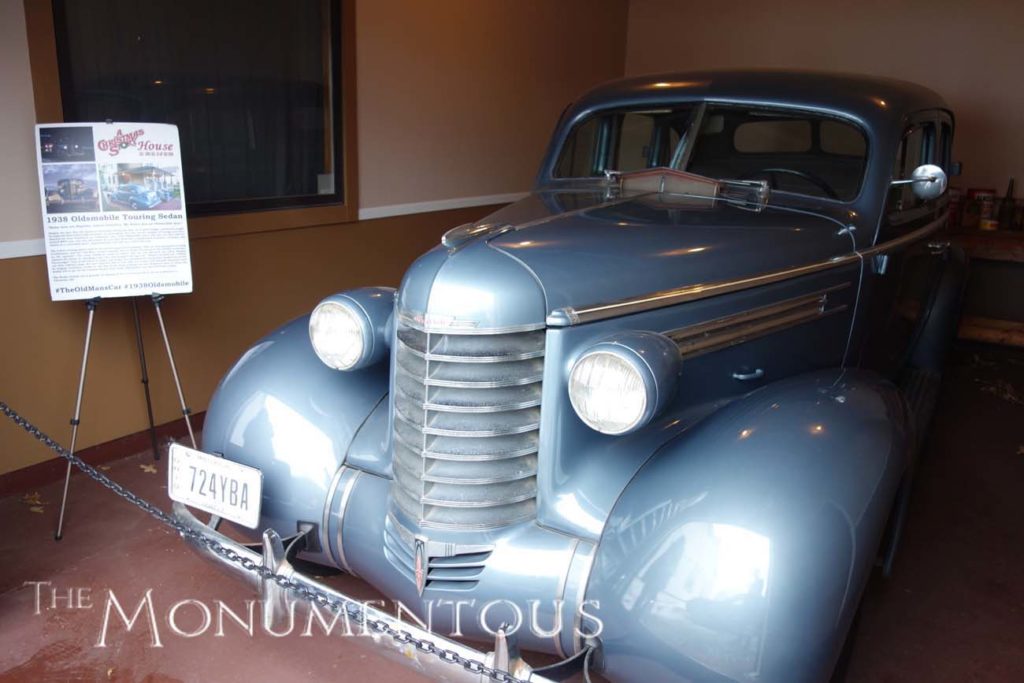 Jones gutted the interior to transform the house into a near-exact copy of the movie sets. He also purchased the house across the street in order to turn it into a museum and gift shop. The museum houses all sorts of props from the movie, including the car that was used for the infamous “Oh Fudge” scene, the snowsuit that Ralphie’s brother Randy had to wear and the chalkboard from Miss Shields’ classroom. The museum also houses one of the Red Ryder B.B. guns that was used in the movie.
Jones gutted the interior to transform the house into a near-exact copy of the movie sets. He also purchased the house across the street in order to turn it into a museum and gift shop. The museum houses all sorts of props from the movie, including the car that was used for the infamous “Oh Fudge” scene, the snowsuit that Ralphie’s brother Randy had to wear and the chalkboard from Miss Shields’ classroom. The museum also houses one of the Red Ryder B.B. guns that was used in the movie.
To varying degrees, these sorts of props and history exist for every movie ever made, but the popularity of the film created an opportunity that Jones was able to develop in an incredible way. The Christmas Story House isn’t just a collection of props and sets, as it has allowed fans of the film to relive their favorite memories of the film and connect with genuine history from it. Doing so has given fans a place they are more than happy to support in multiple ways.
The experience that is created in the house is about both nostalgia and reverence for the film, and that combination has proven to be especially powerful for visitors.

Leg Lamps, B.B. Guns and a Night in Ralphie and Randy’s beds
A trip through the Christmas Story House is led by a tour guide who talks through the history associated with the house, film, and process to turn the location into a museum. The guide stays with groups throughout the entirety of the trip through the house and museum, but visitors have complete freedom to explore the interior and exterior of the house as well as the museum while taking as many pictures as they want.
Those pictures can include visitors re-creating iconic scenes from the movie, including hiding under the kitchen sink like Randy did when he feared for Ralphie’s life, posing with a B.B. gun like Ralphie on Christmas morning, and standing in front of the leg lamp that sits at the front window, just as it did after the Old Man put it on display in the movie. Most of the actual props from “A Christmas Story” are located in the museum.
While the interior is a re-creation of the actual sets that were utilized in the film, it’s easy for visitors to imagine themselves in the movie after looking into the kids room and sitting in the bathroom where Ralphie had his mouth washed out with soap. Visitors who have never seen the house before have commented that they felt like they grew up in it.
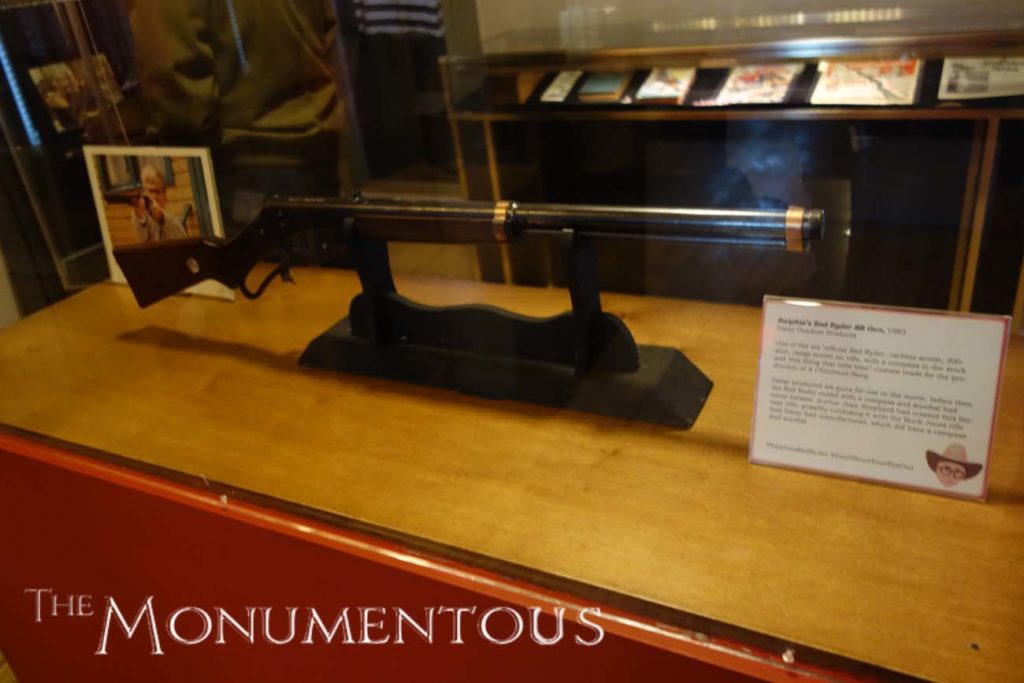 Props such as the Red Ryder B.B. gun and Randy’s snowsuit are protected in the museum across the street, but the museum itself isn’t just a collection of items from the film. The museum tells the story around how the film came together, and viewers can come away from it with a better understanding around how and why the film turned into a classic. The museum allows visitors to get an up close and personal look at items and history that they’ve admired and grown up with.
Props such as the Red Ryder B.B. gun and Randy’s snowsuit are protected in the museum across the street, but the museum itself isn’t just a collection of items from the film. The museum tells the story around how the film came together, and viewers can come away from it with a better understanding around how and why the film turned into a classic. The museum allows visitors to get an up close and personal look at items and history that they’ve admired and grown up with.
For anyone who wants an even more personal experience, A Christmas Story House recently became available for anyone that wants to spend the night in Ralphie and Randy’s beds. Overnight guests have use of the house’s private third floor loft for the entirety of their stay and are able to utilize the whole house from an hour after closing until 9 am the following day.
This addition showcases just one of the economic opportunities that has been created by the Christmas Story House. It’s an addition that builds upon a strong economic foundation for both A Christmas Story House and the surrounding neighborhood.

The Economics of Nostalgia
A Christmas Story House owner Brian Jones had always been a fan of the “A Christmas Story” movie, to the point that he started manufacturing and selling copies of the lamps himself. Complete with fishnet stocking and a black high-heeled shoe, the lamps sold well, but he’s been able to seize on the opportunity to turn this business into something much bigger and more all encompassing.
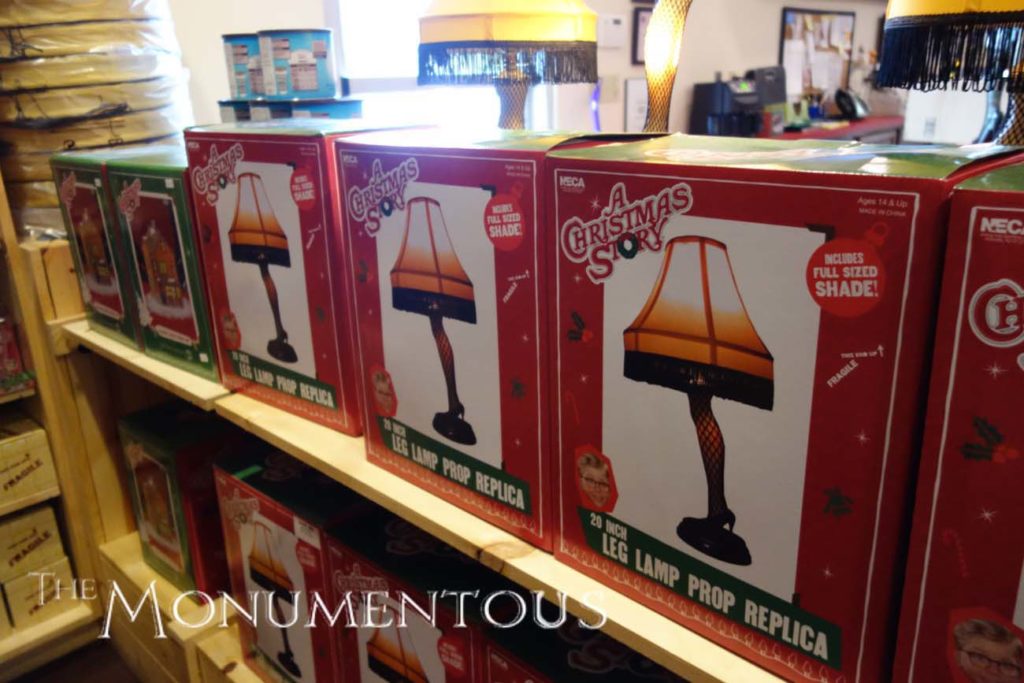 The gift shop for the A Christmas Story House absolutely allows visitors to purchase these leg lamps, but also presents the opportunity for visitors to buy just about anything else they might want that is directly or indirectly associated with the movie. From souvenirs to re-creations of famous props like Ralphie’s bunny suit, visitors can purchase a variety of items that speak to their nostalgia and/or reverence for the movie. All of that is in addition to the admission fee for the house and museum.
The gift shop for the A Christmas Story House absolutely allows visitors to purchase these leg lamps, but also presents the opportunity for visitors to buy just about anything else they might want that is directly or indirectly associated with the movie. From souvenirs to re-creations of famous props like Ralphie’s bunny suit, visitors can purchase a variety of items that speak to their nostalgia and/or reverence for the movie. All of that is in addition to the admission fee for the house and museum.
A Christmas Story House hasn’t just created economic opportunities for itself though. Restaurants like the nearby Rowley Inn have formed partnerships for the benefit of both organizations, and there are also numerous local restaurants that have been able to see increased business due to the influx of people to the area.
The economic impact of the A Christmas Story House for itself, surrounding businesses and the entire neighborhood can be seen and measured in multiple ways, but direct impact it has had on the city and what it indirectly embodies for the wider culture is even more notable.

The Culture in Cleveland and Beyond
The sight of the steel mills in the background of the house captured the working class feel the producers wanted to enable, but they also represent something significant about the city itself. The setting conveys a personality that can still be felt in the neighborhood, which has helped the city to begin to change the sometimes negative perception people have of it.
Cleveland has a number of notable sights and attractions, but the fact that A Christmas Story House already ranks alongside other icons like the Rock & Roll Hall of Fame and the Cleveland Museum of Art conveys what kind of impact it has made on the culture of the city. People have come to associate the film with the city, and giving fans of “A Christmas Story” a place where their fondness of the film can be realized has meant a great deal to the Tremont neighborhood and the city as a whole.
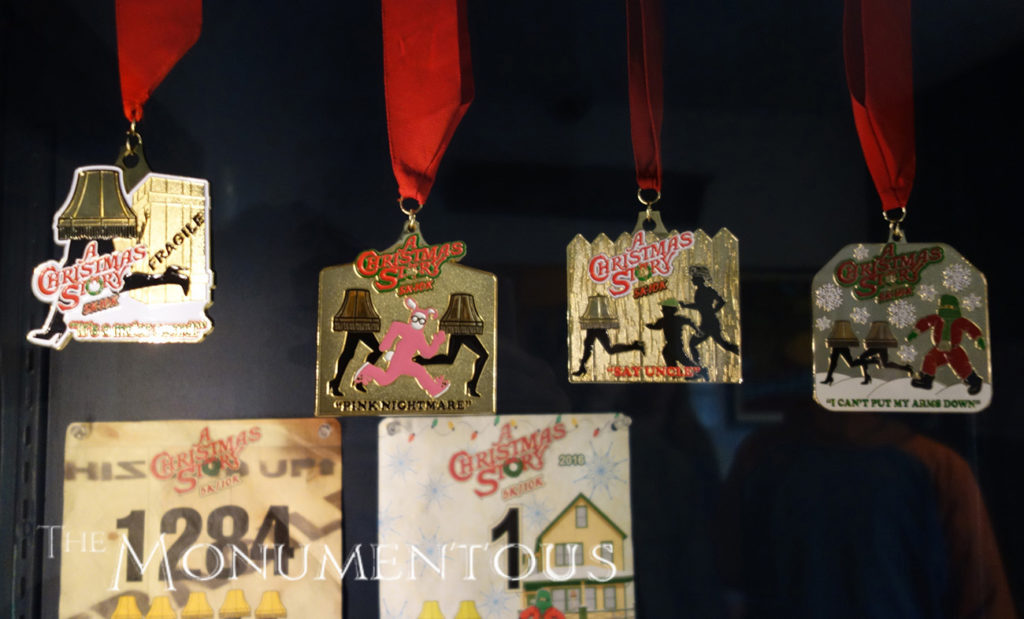 The impact of this project can be seen and felt in far more literal ways though. The annual A Christmas Story 5K-10K run pulls in people from all over for a race that promotes health and fitness, stimulates the local economy and galvanizes the community. 100% of race proceeds benefit A Christmas Story House Foundation, a non-profit organization founded to serve the House’s neighbors in Tremont. Their purpose is to assist the community of Tremont by helping to restore and maintain neighborhood homes.
The impact of this project can be seen and felt in far more literal ways though. The annual A Christmas Story 5K-10K run pulls in people from all over for a race that promotes health and fitness, stimulates the local economy and galvanizes the community. 100% of race proceeds benefit A Christmas Story House Foundation, a non-profit organization founded to serve the House’s neighbors in Tremont. Their purpose is to assist the community of Tremont by helping to restore and maintain neighborhood homes.
Beyond the literal impact that has been enabled in Cleveland, audiences continue to discover and cherish the story itself, which has inspired new interpretations of the film, such as “A Christmas Story: The Musical” and “A Christmas Story Live”. In 2012, the film was selected for preservation in the National Film Registry by the Library of Congress for being “culturally, historically, or aesthetically significant.” Giving audiences a place to celebrate this significance has proven to be especially notable.
The impact the film has had on the culture of Cleveland and elsewhere is similar to the impact other holiday classics like “It’s A Wonderful Life” and “Miracle on 34th Street” have had over the years. However, “A Christmas Story” will always be different and potentially more relevant because of A Christmas Story House. This physical location has given life to a legacy that it much bigger than the film itself.

Creating a Legacy
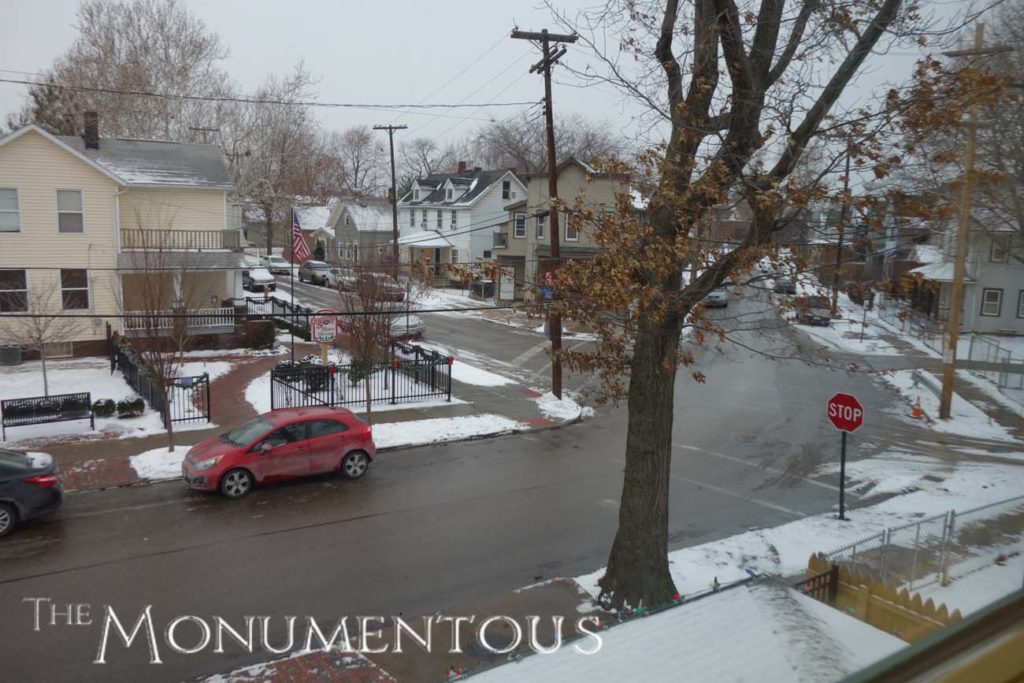 A Christmas Story House exists because of the opportunity that an entrepreneur saw in a house that was for sale on eBay. It’s not a monument that could have been created anywhere else, but it wouldn’t exist if someone had not recognized what was monumentous about this particular location.
A Christmas Story House exists because of the opportunity that an entrepreneur saw in a house that was for sale on eBay. It’s not a monument that could have been created anywhere else, but it wouldn’t exist if someone had not recognized what was monumentous about this particular location.
There are countless locations and structures across Cleveland, the state and even the world that are similar to the one in the Tremont neighborhood. They might not seem like anything special, but the A Christmas Story House is proof that transforming any of them into something monumentous is simply about recognizing and acting on the kind of legacy and influence they can come to represent.
